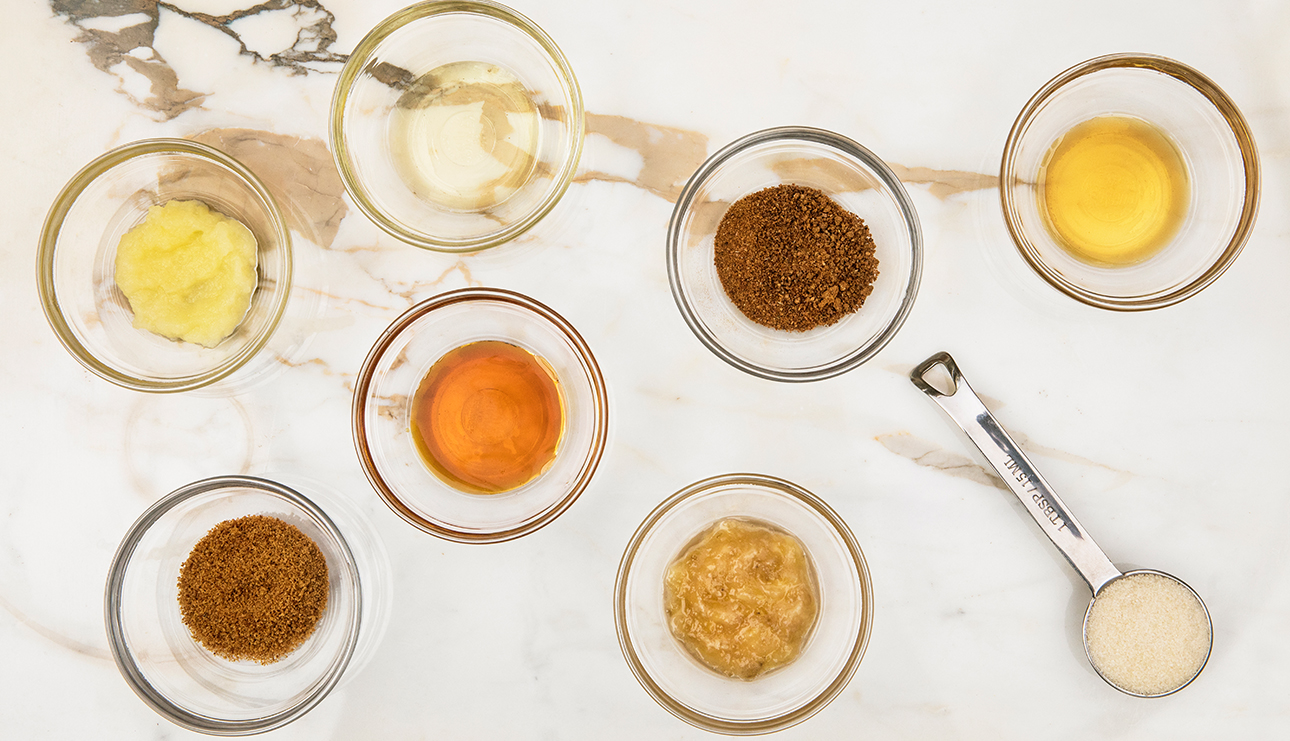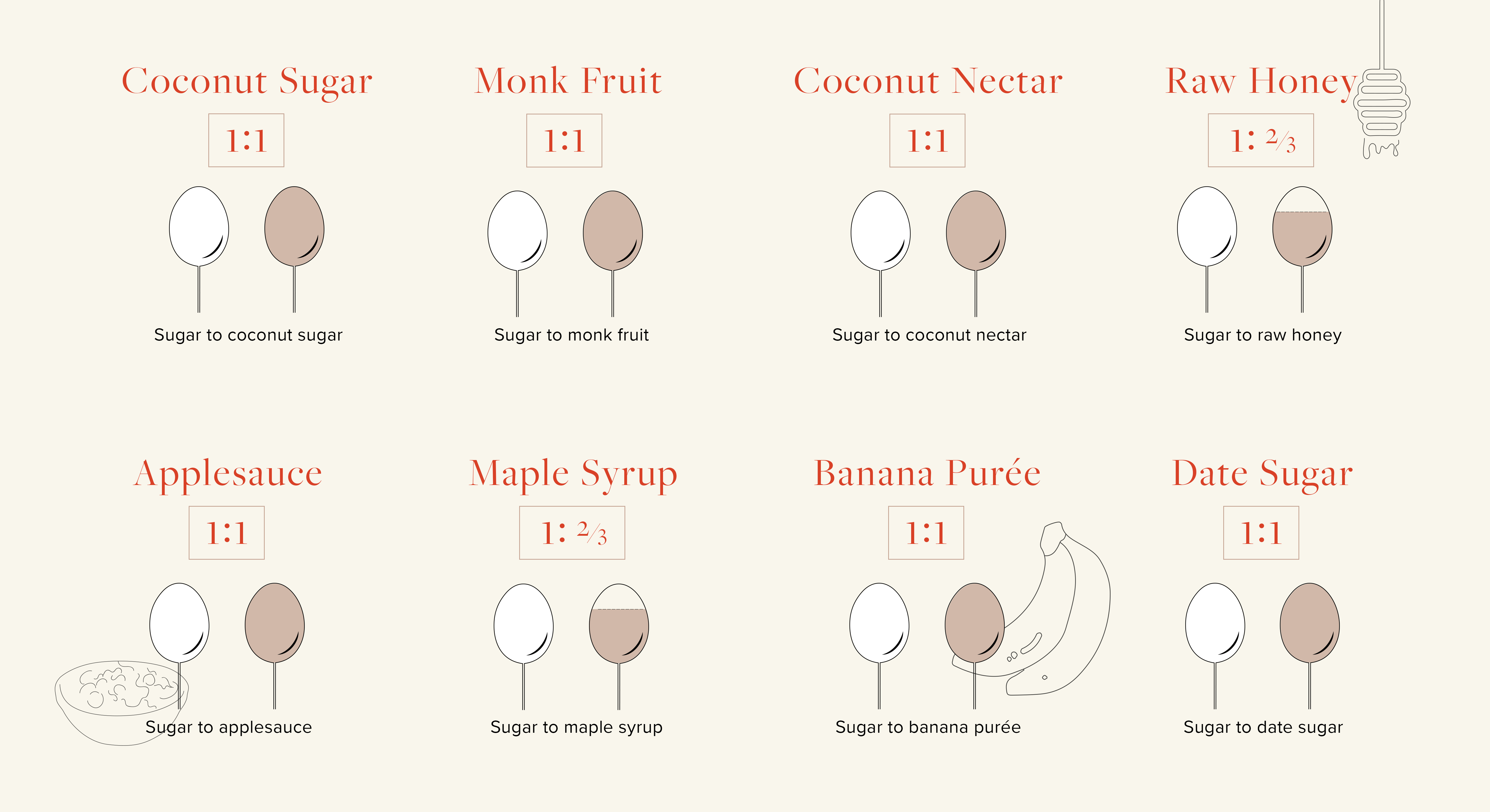Choosing The Right Sweetener Alternative
Iona Brannon
Sugar, the dreaded 5-letter word, is one of the biggest health culprits in our day and age. It has been a contributing factor to the increased levels of obesity, tooth decay, type 2 diabetes and heart disease in our society.
The average American consumes approximately 20 teaspoons, roughly 1/4 of a cup, of added sugar a day. This is high above the recommended daily intake of 6 to 9 teaspoons a day. It’s no surprise, our grocery stores aisles are stocked with packaged foods filled with added sugars. According to a study by the Lancet, “74% of products in the US food supply contain caloric or low-calorie sweeteners, or both.” It isn’t just affecting adults though. By the age of 8, the average child consumes 21 teaspoons of sugar daily, seven times the recommended intake. This sugar can hide in everyday snacks such as fruit juices, donuts, fruit roll-ups and sweetened yogurts. Increased sugar intake in children can put them at risk of heart disease, elevated blood pressure and obesity. Even now, more than ⅓ of the children in America are obese or overweight.


By the age of 8, the average child consumes 21 teaspoons of sugar daily, seven times the recommended intake.
It’s clear that reducing our added sugar intake is necessary to live a healthy life. The way sugar temporarily spikes our energy and mood before making them plummet is a counterproductive and addictive cycle we might not even realize we’re stuck in. Cutting out processed sugars and replacing them with healthier, natural sugar alternatives won’t just give you physical benefits such as clearer skin, better digestion and healthy weight maintenance. It has also been shown to help stabilize mood and energy levels and increase mental clarity.
How do you begin reducing sugars? Keep an eye out for what you’re drinking. Juices and coffee drinks have a way of sneaking in added sugars. Sauces and salad dressings are also infamous for their high levels of sugar. What about times when a dish is simply meant to be sweet? Do you have to give up dessert hour? What about those cookies? One of the easiest ways to begin reducing added sugars in your own home is by swapping out the processed cane sugar you’re putting in your baked goods, your sweet tea and your cooking and replacing them with healthier, natural sweeteners.
Finding sugar alternatives can feel overwhelming, but we’ve collected a few of our top natural sweeteners for you to try. Just remember that even though these are natural and a healthier option than refined white sugar, they still have sugar in them so use sparingly!
Coconut Sugar
With a flavor similar to brown sugar and molasses, coconut sugar is a flavorful sugar substitute. It does not have a strong coconut flavor and is lower on the glycemic index. Inulin fiber, found in coconut sugar, can even help balance blood sugar levels. When replacing sugar, use coconut sugar at a 1 to 1 ratio. Be careful if melting coconut sugar, as it has a lower burning point than white sugar.
Monk Fruit
With zero calories and a glycemic index of zero, monk fruit sweetener is a great alternative for diabetics. Monk fruit sweetness comes from mogrosides, not the fructose that sweetens most fruit. Mogrosides have high levels of antioxidants and have also been shown to help fight inflammation. When using as a sugar replacement, most find it works well at a 1 to 1 ratio, but some find it too sweet. We recommend adjusting to your personal preferences. As it is heat stable, it can be used in both cooking and baking. When purchasing, be sure to buy a non-GMO sweetener option and steer clear from added ingredients and stabilizers, especially maltodextrin.
Coconut Nectar
Derived from the sap of the coconut tree, coconut nectar is low on the glycemic index and has magnesium, zinc and iron. Its consistency is similar to maple syrup, and it works well in everything from baked goods to sweetened drinks. Use it at a 1 to 1 ratio to replace sugar. Although it doesn’t taste like coconut, it has its own unique, robust flavor that can bring a special touch to your dishes. As an added bonus, it’s also low in fructose!
Raw Honey
A staple to most households, raw honey is full of enzymes and antioxidants. It touts many health benefits and is a natural neutralizer of free radicals. Use it to replace sugar at a 1 to ⅔ ratio and reduce the added liquid by 1/4. It’s important to note that you should never cook with raw honey, as the heat destroys many of the benefits.
Applesauce
You can use unsweetened applesauce as a sugar replacement in baked goods. It can be replaced at a 1 to 1 ratio, but like agave nectar, keep in mind that there is added liquid from the applesauce. You can compensate for this by reducing any other added liquid by ¼ cup for every cup of applesauce that you use.
Maple Syrup
Thick in texture and distinct in taste, maple syrup is not only useful as a topping for your morning pancakes but may also be a good substitute for sugar as it contains quite a few minerals, including copper, calcium, potassium and sodium. Use maple syrup at a 1 to ⅔ ratio to replace sugar, and reduce the added liquids by ¼ to maintain the correct consistency. If using maple syrup in baking, reduce the baking temperature by 25°F. Keep in mind when substituting with maple syrup that the flavor will definitely change as well.
Date Sugar
Full of fiber, antioxidants and minerals, date sugar has a rich, caramel-y flavor to it. It can be used to replace sugar at a 1 to 1 ratio and is especially useful in baking. Because it is made from ground up dates, it should not be used in recipes that require the sugar substitute to dissolve, such as in hot drinks.
Banana Purée
Banana is not only a great source of potassium, but it also has a lot of vitamin C and can possibly help control blood pressure. It can be used in baking at a 1 to 1 ratio to replace sugar. Always go with a ripe banana. You can tailor the sweetness of the purée based on the ripeness of the banana. The riper the banana you choose, the sweeter it’ll be! Add a little bit of water to give it a consistency similar to applesauce. Be aware, though, banana has a strong taste and it will definitely impact the flavor of your final product.






